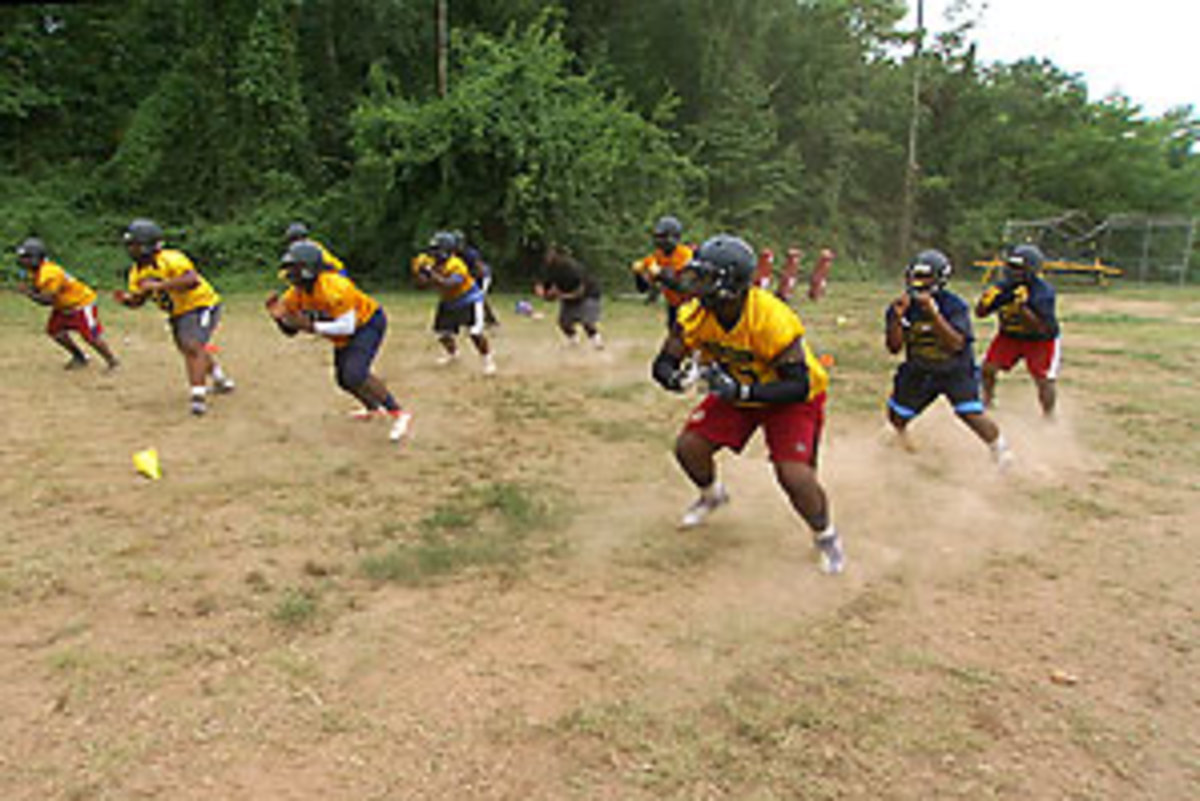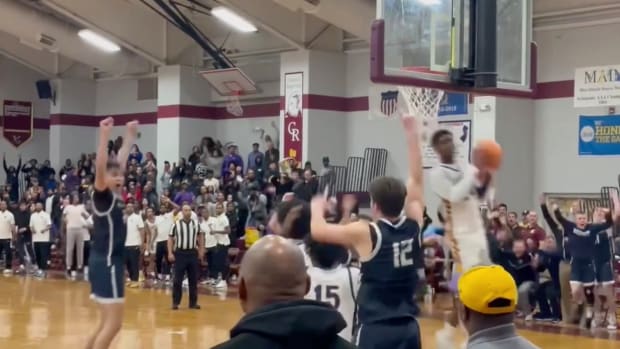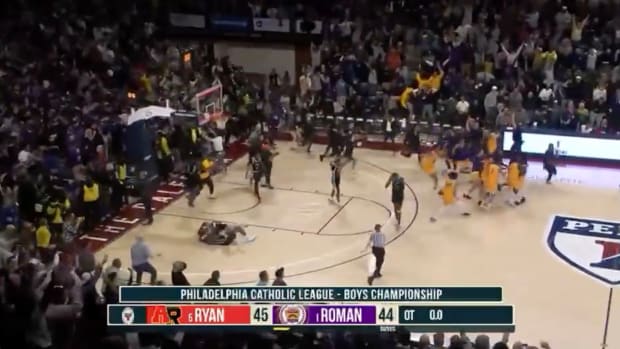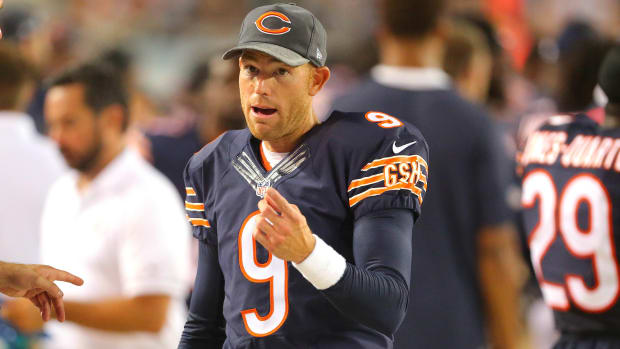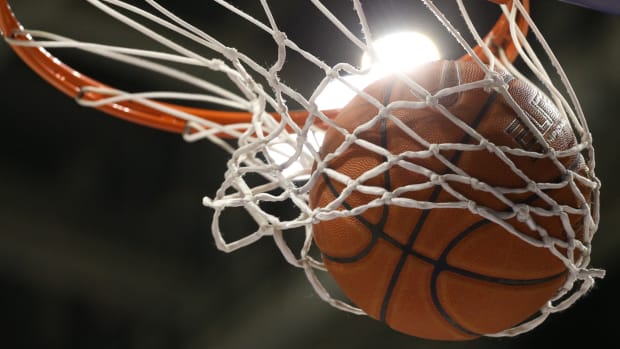Friendship Academy uses football to help inner city kids go to college
Pretty quickly, however, it becomes apparent that Abdul-Rahim isn't talking about recruiting, competing for SEC titles or even winning football games. He's explaining how Friendship is improving its players' lives, a cause he's remained steadfastly dedicated to since becoming the school's first head coach in 2004.
Abdul-Rahim is striving to help inner city kids attend college. He's opening doors that likely would never open otherwise.
"It's difficult for a lot of kids, especially inner city kids, to believe in a process when it's nothing," he said. "Just getting them to understand that they can go to school, they can get scholarships and they can be consistent, that's probably the biggest thing."
If you're not familiar with Friendship's football story, here's a quick rundown. In 2004, Abdul-Rahim, then just a guidance counselor, approached the board of trustees in hopes of convincing them to adopt a varsity football team. He stressed how the sport afforded him a scholarship to San Diego State, an opportunity that came with an education. As a fellow D.C. native who grew up in the inner city, he also shared his unique perspective on overcoming the odds.
GALLERY: A look at Azaar Abdul-Rahim and Friendship Academy Football
"You see a lot of wasted talent," said Abdul-Rahim. "I was one of the fortunate ones that was able to get a scholarship. After I got my master's degree, I kind of knew what I wanted to do, to give back in the inner cities.
"I wasn't the most talented kid in my neighborhood. I wasn't the most talented kid on my high school team. But other qualities that were instilled in me, from my parents and my community, allowed me to persevere. We just try to instill those same things."
Eventually, the trustees bought in. And while the Knights struggled mightily during their first few seasons, the foundation was laid. The program -- and the process -- began to take shape.
In 2012, Friendship is a gridiron powerhouse. The Knights went 9-1 last season, and they're 2-0 to begin this year. Since 2009, they've sent more than 40 students to Division I schools.
Three years ago, Abdul-Rahim started holding a National Signing Day ceremony each February, an assembly in which each player moving to the next level publicly declares his college of choice. Lacking a playoff system after being denied entry into the D.C. Interscholastic Athletic Administration and Washington Charter School Athletic Administration, the program viewed this event as each season's ultimate goal -- the culmination of months of hard work.
"We made a culture where our championship is on National Signing Day," said Abdul-Rahim. "It was something tangible for the kids to see themselves on stage in the next two, three or four years. It gave them something to look forward to, as opposed to looking for a championship that really doesn't pay for school."
And for every Eddie Goldman, a five-star defensive tackle who signed with Florida State in 2011, and Jalen Tabor, a junior cornerback who already holds offers to Alabama, Auburn and South Carolina, among others, there's plenty of lower-profile inspirational cases. Darius Holly, whose parents both died before he entered high school, is now a defensive back at West Virginia State; Earl Johnson, who lost his father and moved in with his aunt before enrolling at Friendship as a sophomore, was awarded a scholarship to New Mexico.
"We had kids that were close to dropping out or ineligible at certain times who are still in school," said Abdul-Rahim. "We've had kids whose both parents may have died of AIDS who are in school right now, who are still persevering."
Now in its eighth year, Friendship has officially scaled the mountain. But challenges still remain. Just look at its facilities.
The Knights have no home field, no locker rooms and a woeful lack of usable equipment. They practice on a field nicknamed "Friendship Beach", a nod to its makeup of rocks and dirt -- a dusty and dangerous playground for high school athletes.
"We've had two kids suffer ACL injuries this fall," said Abdul-Rahim. "It's to a point where [improvement] has to happen just to keep our kids safe."
But despite the remaining obstacles, Friendship's outlook is overwhelmingly bright. In June, the NFL Grassroots Program awarded the school a $200,000 grant, the first step in enhancing player safety. And the postseason situation has also been remedied. The Office of the State Superintendent of Education and D.C. Public Schools have scheduled a true citywide title game on Dec. 1. For the rest time ever, the Knights could experience the playoffs. Like Saban, Abdul-Rahim has his sights set on the crown.
"Selfishly as a coach, you always want your team to be the best team it can be," he said. "And when you win football games it's more exposure for your program and it's better for your kids."
That last point resonates the most. No matter how successful Friendship becomes, statistics and winning games will always remain secondary. The primary goal is positioning players for a better future, one that includes a collegiate degree.
To hear Abdul-Rahim tell it, that mission is far from over. The process has yet to reach its peak.
"We want to be at a level where every kid in our program can play on the next level," he said. "Or if they can't play on the next level, to definitely know that they're going to college. I don't know if you can get any better than that. In high school football, your first responsibility is the betterment of young men. If they're going to college and graduating from college, that's probably the most important thing you can do."
